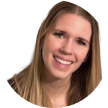Azodha Platform accelerates innovation in care delivery through a modular, AI-infused, interoperable digital enablement platform. It enhances patient experience and streamlines provider efficiency. Below is a detailed exploration of each core solution:
1. Remote Patient Monitoring (RPM):
Azodha's RPM provides real-time monitoring with AI-driven insights and seamless EHR integration. This device-agnostic platform supports remote patient monitoring devices and wearables, enabling continuous monitoring and proactive alerts for timely interventions.
2. Virtual Visit & Wait Room :
Azodha streamlines telehealth appointments with a user-friendly platform, integrated scheduling, tele and patient onboarding capabilities. The platform optimizes waitroom to drive patient centric and optimized provider experience.
3. Patient and Provider facing Scheduling:
Comprehensive EHR integrated or stand alone scheduling for patients, provider operations and hospitals for home care, virtual and physical office scheduling
4. Digital Patient Engagement:
Azodha platform integrates and digitized patient care journey navigation across enrollment, onboarding, scheduling, health goals, surveys, chat, education and more via patient apps and portals.
5. Conversational AI:
Azodha uses Gen AI to enhance patient engagement through personalized care plans, AI assist for various patient interactions including scheduling, Q&A with voice interaction capabilities.
6. Dispatch and Logistics:
Azodha platform enables dispatch and logistic insights for home based scheduling and operations
Through seamless integration with existing systems and AI driven digital components, Azodha ensures that healthcare providers can deliver superior patient experience while optimizing operational workflows and administrative costs.






















